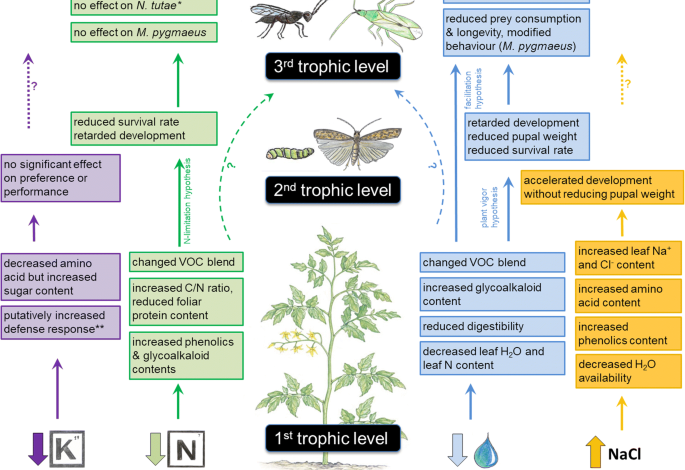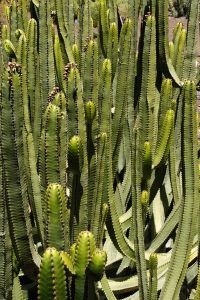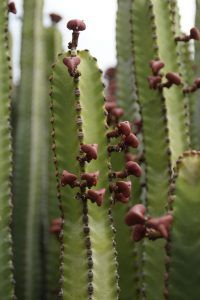Cardón: [Cultivation, Irrigation, Care, Pests and Diseases]

 Pachycereus pringlei is a cactus native to the southern Sonoran desert in Mexico. It is one of the largest and longest-lived species of the cacti family, as it lives for 200 to 300 years.
Pachycereus pringlei is a cactus native to the southern Sonoran desert in Mexico. It is one of the largest and longest-lived species of the cacti family, as it lives for 200 to 300 years.
Its generic name describes it perfectly. This comes from the word pachy, which means “robust trunk” and the word cereus, which means “column-shaped cactus”. The epithet Pringle honors the botanist Cyrus Guernsey Pringle.
The cardón is a very valuable resource in the area since it favors the filtration of water in the soil, increases its organic content and prevents erosion. Likewise, it provides protection and food for the inhabitants of the region and for some animals.
The vertical growth of the cardón allows it to take advantage of the morning and afternoon light, while the heat and radiation of the sun at noon is reduced.
Important points when sowing cardón
- Scientific name: Pachycereus pringlei.
- Common name: Cardón, giant cardón, candelabra, saguesa, saguara.
- Height: 20 meters.
- Light requirement: Direct light.
- Temperature: temperate and dry climates (15ºC to 25ºC).
- Irrigation: Scarce.
- Fertilizer: Liquid fertilizer or slow-dissolving fertilizers.
What characteristics does the cardón have?
The cardón is a giant cactus that can reach up to 20 meters in height and 1.5 meters in width. It is an arborescent plant with a woody trunk. It develops branches that sprout from the base and grow parallel to the main trunk.
Each of these columns has between 11 to 17 ribs, in which a series of large areolas are linearly distributed. Each areola is made up of a set of 20 to 30 gray thorns, and it is in these that a flower and a fruit can appear.

Cardón flowers have a funnel shape and are white and yellowish in color, with pink or purple lines. These open at dusk and close at noon the next day. In their native area they flower between the months of January to April.
The fruit is globose in shape and has numerous yellowish thorns. When ripe, it opens in 4 parts, revealing part of its purple pulp, as well as its seeds. They measure 6 or 7 centimeters long and grow during the months of April and June.
When to plant cardón?
The cardón can be sown by seed throughout the year. However, the most favorable conditions occur during the months that correspond to spring and autumn.
Where to plant cardón?
 The cardón, despite belonging to hot desert regions, can be grown in temperate and Mediterranean climates. The ideal temperatures for this plant are between 15ºC and 25ºC, although they can grow well outside this range.
The cardón, despite belonging to hot desert regions, can be grown in temperate and Mediterranean climates. The ideal temperatures for this plant are between 15ºC and 25ºC, although they can grow well outside this range.
On the other hand, care must be taken that the cardon is not exposed to temperatures below 5ºC, although it can tolerate temperatures down to -4ºC and frost for short periods of time.
A place should be found where the cactus can be exposed to direct sunlight so that it receives all the necessary energy. It can also be grown in semi-shade, however, it is preferable to place it outside, in full sun, either alone or in groups.
The cardón can also be grown in pots, indoors, in places with cold and severe climates. In these cases, it should only be placed in front of the windows so that it can receive as much light as possible.
How to prepare the land?

The soil to grow cardón must be porous, with good drainage and low pH, it also needs to be sterilized, free of weed seeds. It is recommended to use a mixed substrate composed of ⅔ of inorganic substrate and ⅓ of organic substrate; Being ideal, an ideal mixture would be with washed river sand and peat.
This plant can grow without adding fertilizer. However, a special liquid fertilizer for cacti can be used, or a slow-dissolving fertilizer.

How do we water the cardón?
The cardón is a plant typical of dry regions, so its irrigation is extremely low, especially when it comes to well-adapted specimens. However, irrigation depends on daylight hours and weather conditions.
For example, cacti planted in sandy substrates should be watered more frequently than those grown in substrates with greater water retention. However, as a general rule, they should be abundant and spaced out.
How often do we water the cardón?
It is recommended to water once every 2 weeks during the spring. In summer, it should be applied once a week. In the fall, it should be cut back to stop for the winter, unless you are in hot climates.

How to plant a cardón step by step?
It is easily propagated by seeds, although it is also possible by cuttings. Below are the steps to cultivate cardón by the first option.
by seeds
- Wash the fresh seeds in water and a little fungicide or soap.
- Place the seeds in the prepared substrate, pressing them down slightly without sinking them completely. The temperature should range between 20ºC and 28ºC.
- Spray water and deposit inside a tray covered with glass or plastic.
- Gradually open the cover until the first thorns form and allow the substrate to dry before the next watering.
- Place the seedlings 1 centimeter in diameter in a bright and warm place.
- As soon as they reach 3 centimeters in diameter, transplant them into individual pots with a substrate rich in peat. Place in the sun as soon as they have well developed their roots.
What care does the cardón need?
The cardón is not a plant that requires a lot of care. In fact, it is very easy to grow. However, if it is in a pot, it should be transplanted to another every 3 or 4 years. To do this, dead roots must be removed and the substrate changed.

What pests and diseases affect the cardón?
The cardón is resistant to diseases and parasites. However, it can sometimes be attacked by fungi that cause wet rot (Phytophtora cactorum, Botrytis cinerea, Pythium, Fusarium and Rhizoctonia).
In the case of pests, the Tetranychus urticae mite, the Diaspis echinocacti mealybug, the cottony mealybug, the root mealybug, the green aphid and the black aphid are located.

References
- http://www.scielo.org.mx/scielo.php?script=sci_arttext&pid=S0188-62662017000500011
- https://cibnor.repositorioinstitucional.mx/jspui/bitstream/1001/864/1/delgado_m.pdf
- http://dspace.cibnor.mx:8080/bitstream/handle/123456789/220/medel_a.pdf?sequence=1
- http://web.ecologia.unam.mx/cactsucmex/csm2014_59_2.pdf
- https://www.sdnhm.org/oceanoasis/fieldguide/pach-pri-sp.html
- http://jardibotanic.org/fotos/pdf/publicacion_2_111_CACTUS-ESP-BAJAaaa.pdf
- https://apps.cals.arizona.edu/arboretum/taxon.aspx?id=28
- https://www.groww.fr/en/plants/pachycereus
- http://jardibotanic.org/fotos/pdf/publicacion_2_111_CACTUS-ESP-BAJAaaa.pdf




![Photo of How to Plant Spinach: Basic Guide [Step by Step + Images]](https://www.complete-gardening.com/wp-content/uploads/2022/08/how-to-plant-spinach-basic-guide-step-by-step-images-390x220.jpg)